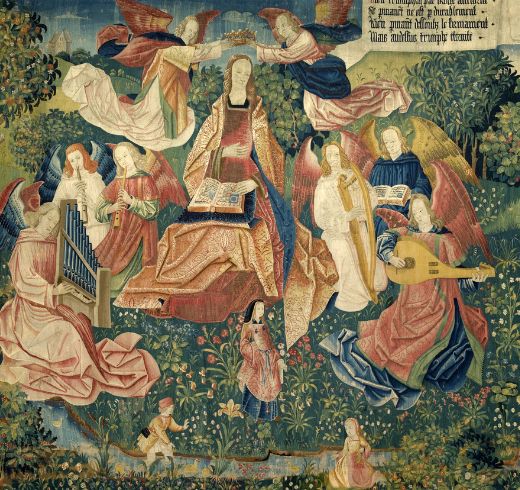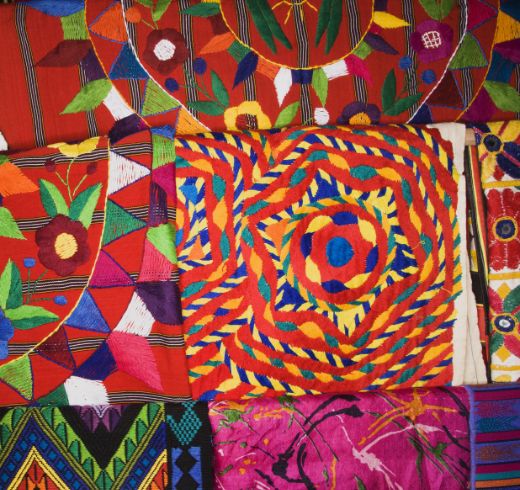The History of Tapestry Making: An Old Art Form For Today
Ever wondered if tapestry could be your next craft obsession? Intrigued by its timeless allure, yet uncertain if it's the right fit for you? Picture this: you, surrounded by vibrant threads, weaving stories and dreams into intricate designs.
But maybe you're thinking, "Isn't tapestry just for the seasoned artisans?" Let's debunk that myth together. Tapestry isn't just an ancient art; it's a canvas for anyone to express their creativity.
So, if you're seeking a craft with soul and substance, look no further. Let's unravel the mysteries and embark on a journey through the fascinating world of tapestry.
Ready to dive in? Let's begin.
Tapestry's Journey Through Time

Tapestry weaving finds its roots in the ancient civilisations of Egypt, Greece, and China, where artisans skilfully intertwined warp and weft threads to create intricate fabrics.
This art form reached its zenith during the Middle Ages, flourishing across Europe as weavers meticulously crafted tapestries depicting scenes of historical significance and mythological tales.
In the Middle Ages, European tapestries became prized possessions of royalty and nobility. Weavers worked diligently to produce large-scale tapestries depicting scenes of religious significance, mythological tales, and historical events.
These tapestries, woven by hand on high-warp looms, served not only as decorative wall hangings but also as valuable symbols of wealth and power.
During the Renaissance period, tapestry weaving reached new heights of artistic expression. Flemish weavers, such as those in the workshops of Brussels and Arras, gained renown for their mastery of the craft.
By the 18th century, tapestry had become a symbol of wealth and prestige, adorning the walls of palaces and noble residences.
Influential artists like William Morris introduced innovative techniques and designs, blending traditional tapestry weave with elements of painting and sculpture.
Modern Tapestry: A New Era of Creativity

In the modern era, tapestry has undergone a renaissance of its own, as artists and designers reimagine it as a form of contemporary art.
Today, tapestry is not limited to traditional techniques or historical themes; instead, it serves as a versatile medium for artistic experimentation and self-expression.
Contemporary tapestry artists employ a wide range of innovative techniques and materials to push the boundaries of the craft.
From including unconventional materials like metal thread and silk threads to exploring new methods such as digital weaving technology, the possibilities are endless.
These modern interpretations of tapestry blur the lines between art and craft, challenging conventional notions of what tapestry can be.
Tapestry as a Decorative Masterpiece

In recent years, there has been a resurgence of interest in tapestries as decorative elements in interior design. Designers and homeowners alike are rediscovering the timeless appeal of tapestries as statement pieces that add warmth, texture, and personality to any space.
When putting tapestries into home décor, there are endless possibilities for creativity. A full-size medieval tapestry can serve as a dramatic focal point in a living room or dining area. While smaller wall hangings can add a touch of elegance to a bedroom or study.
By playing with scale, texture, and colour, tapestries can be tailored to suit any interior style, from traditional to contemporary.
Bringing Tradition Back to Tapestry Weaving
Despite the rise of modern technology, there is still a deep appreciation for the traditional craftsmanship involved in tapestry weaving. Artisans and craft communities around the world are working tirelessly to preserve and promote these age-old techniques. They make sure that the art of tapestry continues to thrive for generations to come.
The Metropolitan Museum of Art in New York City works hard to take care of and show its collection of old tapestries. The museum puts these incredible tapestries on display so that everyone can see them. This not only honours how important tapestry is to our culture, but it also inspires people who want to weave or make art in the future.
The Cultural Impact of Tapestry

Tapestries have played a significant role in cultures around the world, serving as both functional objects and works of art.
In Europe, there are grand palaces with tapestries on the walls. In the homes of indigenous peoples, there are also tapestries. Tapestries tell stories and show the values and beliefs of the people who made them.
In addition to their aesthetic appeal, tapestries have also served as powerful symbols of cultural identity and heritage.
For example, the Bayeux Tapestry, created in the 11th century, depicts the Norman Conquest of England and remains a cherished artefact of English history.
Similarly, the vibrant tapestries of the Andes region in South America are imbued with the traditions and customs of indigenous communities.
Building Community Through Tapestry

One of the most exciting aspects of tapestry weaving is its ability to bring people together in a spirit of collaboration and creativity.
Across the globe, communities of artists, artisans, and enthusiasts come together to share their passion for tapestry through workshops, exhibitions, and collaborative projects.
In recent years, there has been a growing trend towards community-based tapestry initiatives that engage with local history, culture, and social issues.
These projects not only foster a sense of belonging and pride within communities. But also provide opportunities for individuals to learn new skills and connect with others who share their interests.
Eco-Friendly Practices in Tapestry Production
As concerns about environmental sustainability continue to grow, there is increasing interest in adopting eco-friendly practices within the tapestry industry.
Artisans and manufacturers are finding new ways to make tapestries that are better for the environment. They are using materials that are grown and harvested in a way that doesn't harm the planet. They are also finding ways to reduce the amount of waste and energy they use when making tapestries..
One example of sustainable practice in tapestry making is the use of organic and ethically sourced fibres, such as organic cotton or wool. Tapestry weavers can make beautiful and eco-friendly tapestries by using natural materials that don't have harmful chemicals or pesticides.
The Future of Tapestry: Trends and Innovations
Looking ahead, the future of tapestry as an art form is bright, with new technologies and innovations paving the way for exciting possibilities.
Artists and designers are using technology to make new and exciting tapestries. They are using digital weaving techniques, 3D printing, to the use of painted cartoons, and other technologies to create works of art that are truly unique.
One emerging trend in tapestry design is the use of interactive elements and multimedia integration.
Artists can make tapestries that react to touch, sound, and movement by using sensors, LED lights, and other digital parts. These tapestries become immersive sensory experiences.
Unravelling The History of Tapestry Making: Your Journey Through Time

As we close the threads of history, remember this: your fascination with tapestry making isn't just a passing curiosity; it's a connection to centuries of human artistry and innovation.
We know the path forward might seem daunting, but armed with newfound knowledge, you're equipped to embrace tapestry's rich legacy.
So, weave your own tale, honouring the past while crafting the future. Start your tapestry-making adventure today and become part of this timeless tradition. Your masterpiece awaits.
